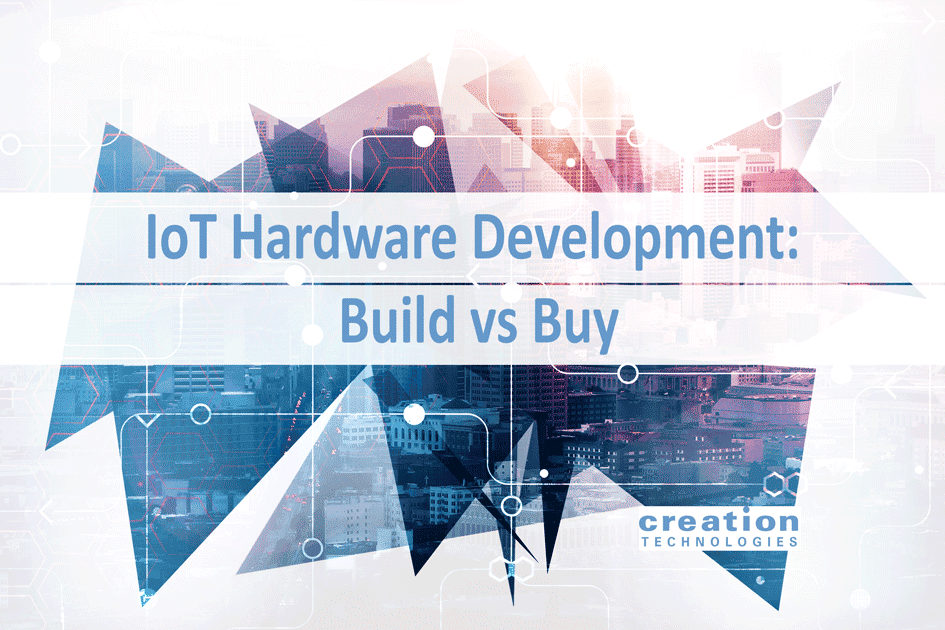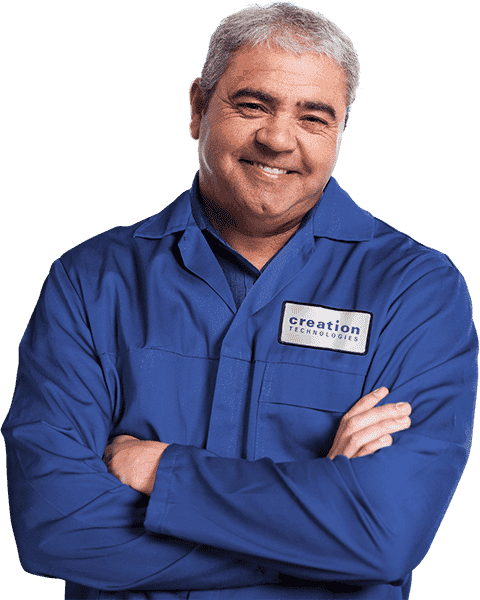IoT Hardware Development: Build vs Buy
Utopia
Developing a new product, especially an IoT hardware product, can be exhilarating. The overwhelming desire to start with a blank slate provides the opportunity to specify the perfect set of requirements that will provide exceptional performance with robust reliability at the lowest possible cost.
Dystopia
And, then you wake up.
The harsh realization sets in that the new product’s requirements will be a soul-crushing, iterative exercise of compromises that in the end will only satisfy the most essential requirements.
While there are many business costs to consider, product management focuses myopically on unit cost first, and development cost second. Furthermore, the level of risk for suppliers and components is often unaccounted for in most analyses which can cause a product to be launched late or embed latent lifecycle issues that will be discovered later usually at the most inopportune times.
Reality Check
Do you really need to design and build a custom device?
Really?
No… really, really?
Are you sure?
If you can buy an IoT device directly from a supplier today that meets most of the requirements, you should strongly consider this approach to reduce your time-to-market risk and to substantially lower your development costs.
However, sourcing an IoT device is not without its own risks.
Unless the IoT device is an industry-standard product, you will be highly dependent upon its manufacturer, and potentially its distributors and resellers. The product quality, reliability as well as the service level for support and warranty claims should be key factors in your supplier selection criteria.
If the supplier has limited stock or builds-to-order, long lead times can severely impair your ability to fulfill orders quickly for your customers.
Furthermore, it is essential to understand the supplier’s lifecycle policy for the product EOL (“End-of-Life”) which specifies the period of availability and the subsequent support duration once the supplier has announced the discontinuation the product. If the supplier does not have such a policy in its standard terms and conditions of sale, the supplier may stop supplying the product at any time and without any advance notice which can leave you in a bad situation.
Even when an EOL notice is provided, the response time is limited to place orders for last time buys. And, there is almost always some level price increase.
You can mitigate this risk by negotiating an agreement with the supplier that provides:
- a license the IP (“Intellectual Property”) for the product
- access to the native design files so that you can continue to build and maintain the product
- an introduction to existing manufacturing partners and suppliers
It is advantageous to negotiate this agreement well in advance of the EOL notification by the supplier. Typically, an escrow agreement provides a legal mechanism by which a 3rd party can provide access to the necessary information in the case of bankruptcy, the sale of the company, or some other trigger event that would affect availability and/or delivery of the product.
Finally, beware of international agreements that cannot be cost-effectively enforced in case of a dispute.
No matter what approach you take, you must ensure that you’ve planned for contingencies, identified alternates, or executed agreements with reputable, long-term partners to mitigate the business risk for a single source, proprietary components for your IoT device.
Are You a Control Freak?
C’mon, admit it!
If so, the impulse to control every single detail of the product specification can be all-consuming. Clearly, you will have to moderate the desired level of customization to meet the timeline, the development budget, the target price, and the expected lifecycle maintenance cost goals. Unless you want to develop everything from scratch, you will need to use some integrated, OTS (“off-the-shelf”) components for your product.
Using OTS components reduces the development risk, time, and cost. However, the trade-off is that you will be dependent upon the component suppliers.
While it is generally easier to find alternates for simpler function components, alternates for sophisticated integrated modules such as sensors, processors, and network modules are much more difficult to find.
Component Selection: Risky Business
While there is an abundance of IoT hardware components on the global market, the long-term availability of these components is suspect. There are a bevy of discounters, brokers, liquidators, or even 2 guys in a garage in Elbonia who sell their flea market wares on the global online tech bazaars such as eBay or Alibaba.
Inexpensive components that are incorporated into high-volume, consumer electronics products such as PCs, smartphones, and tablets have short lifecycles spanning 6-12 months. As soon as these products are no longer in production, the supply of the cheap components incorporated in these products will evaporate quickly.
Savvy suppliers will offer such parts to other buyers at fire-sale prices because they have already amortized the development costs. Frequently, liquidators will buy the remaining stock at a substantial discount.
Here’s the problem. If you’ve incorporated such components into your product design, it is likely that there will either be limited stock available and/or shockingly high price increases.
Additionally, popular hobbyist or evaluation platforms don’t provide EOL notices. Typically, they only provide new product announcements as new product versions are released. The remaining stock of the older versions will be quickly consumed by resellers who will likely increase the price and sell only single units without any volume discounts.
Beware, many low-cost components available on the global market are not sold through reputable channels. Distributors, liquidators, and wholesalers worldwide sell components, but unless they are authorized resellers any quality issues will not be covered by a manufacturer’s warranty. In the worst case, they may even be counterfeit components that do not meet the quality standards of the genuine manufacturer.
Component Suitability by Market Segment
Ensure that you select components that are rated for your intended application. Similar performance parts may be available for a wide variety of applications in consumer, industrial, automotive, military, or space markets. However, the cost difference can be 2x, 10x, or even 100x. Although they may be similar in appearance and the part numbers may only vary by a single alphanumeric character, underrated components used in applications with harsher environmental requirements will likely fail in the field.
Component lifecycles are driven by the product lifecycle of its intended market segment.
Aerospace and military-grade components have the longest lifecycles, followed by automotive and industrial. Consumer-grade parts have the shortest lifecycles (often less than one year), but the astonishingly low prices and wide availability can be difficult to pass up.
Supplier Selection
Innovation drives engagement not only with new technologies but new companies as well. Ideally, you would prefer to deal with a reputable supplier with a long-established history because newer suppliers are at risk of going out of business rapidly. Additionally, they also risk being acquired by a larger competitor who may discontinue the product lines unexpectedly with little or no advance notice. Usually, a newer supplier will offer long-term supply stock guarantees, but just how good is a 10-year guarantee from a company that has only been in business for 2 years? If you must use a newer supplier with a short history, you must have a contingency plan to address what you would do if the new supplier closed its doors today.
Reputable suppliers with brand name recognition may be ideal suppliers, but in a dynamic technology market even historically solid companies can have issues. The recent semiconductor consolidation activity will certainly drive product-line rationalization to prune similar product lines and exit altogether ones with underperforming market segments. While most EOL notices from reputable suppliers will be honored, be assured that in the fine print legalese there are ALWAYS escape clauses for the supplier.
Manage the Risks
Whether you decide to buy or build your IoT hardware product, ensure the inherent risks are identified in the supplier and component selection process and proactively manage them across the entire product lifecycle.
Learn more today by reaching out to one of our professional Business Development team members.
Contact Us
Interested in becoming a supplier? Visit our supplier page.
"*" indicates required fields


